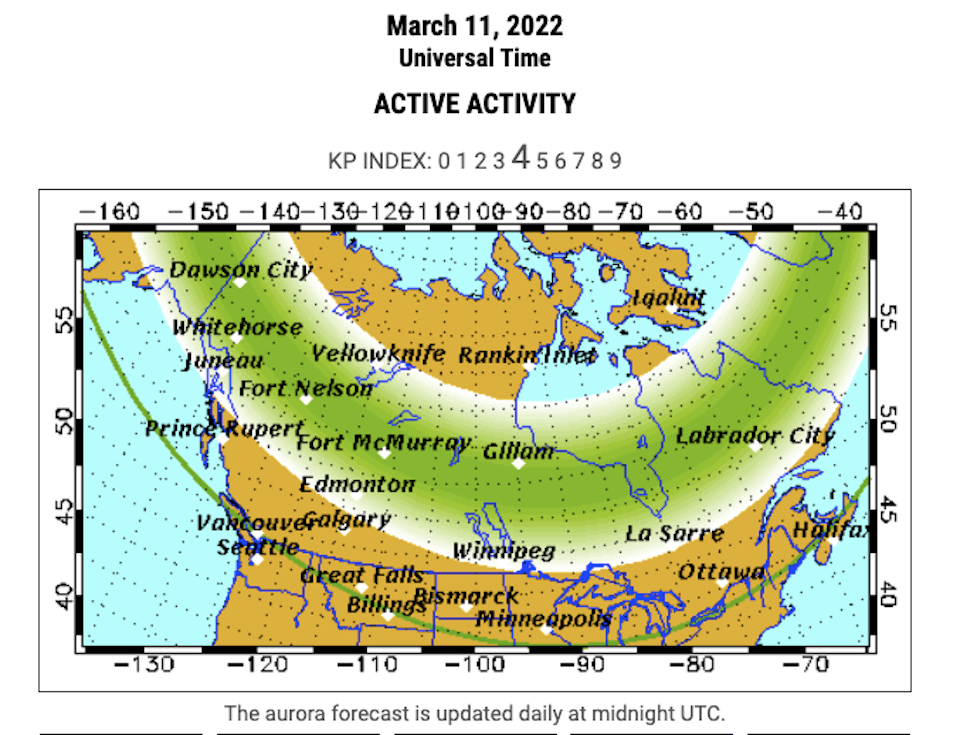If you've never witnessed the northern lights dancing in Metro Vancouver skies, you may have a chance tonight.
While they don't typically manifest as vibrantly as they do in Northern Canadian cities, such as Yellowknife, every once in a while the green glow above the city's skyline provides a spectacular aurora viewing opportunity.
The National Oceanic and Atmospheric Administration (NOAA)'s Space Weather Prediction Center has issued a geomagnetic storm warning as a coronal mass ejection is expected to reach earth late Sunday (March 13), according to Spaceweatherlive.
But you might be able to view the aurora borealis a couple of days before then.
According to the University of Fairbanks (UAF), the northern lights may be viewable in local skies on Friday night.
Auroral activity is expected to be active on Friday and might be visible from "Inuvik, Yellowknife, Rankin and Iqaluit to Juneau, Edmonton, Winnipeg and Sept-Iles, and visible low on the horizon from Vancouver, Great Falls, Pierre, Madison, Lansing, Ottawa, Portland and St. Johns."

What is the best time of night to see aurora?
UAF recommends that you plan to be out for three or four hours around midnight. That said, the dancing lights are active throughout the night. Since clear sky and darkness are both essential to see aurora, the best time is dictated by the weather and by the sunrise and sunset times. The moon is also very bright and can make it more difficult to view the aurora, so lunar cycles should be taken into account.
Find out more information about when to see the vibrant display with the UAF's aurora monitor map.



